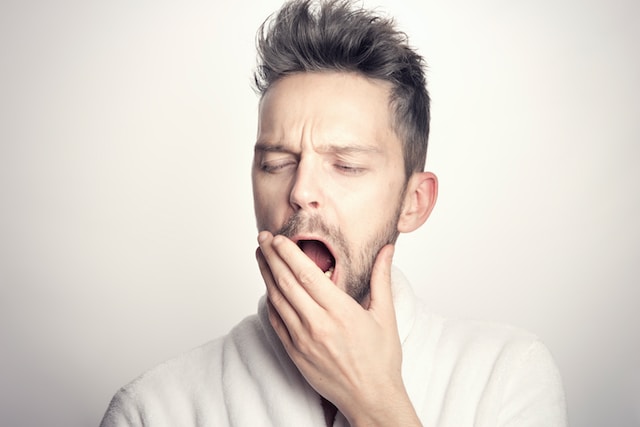
Introduction to Sleep Apnea
Sleep apnea is a common sleep disorder that affects millions of people worldwide. It is characterized by repeated interruptions in breathing during sleep, which can lead to a variety of health problems if left untreated. In this article, we will address common questions and concerns about sleep apnea. We’ll also focus on solutions and dental advices for managing sleep apnea. Furthermore, we will provide links to medical resources for further information and credibility.
What is Sleep Apnea?
Sleep apnea is a disorder in which a person’s breathing is repeatedly interrupted during sleep. These interruptions, called apneas, can last from a few seconds to minutes and may occur 30 or more times per hour. There are three main types of sleep apnea:
1. Obstructive Sleep Apnea (OSA): The most common form, OSA occurs when the muscles in the back of the throat fail to keep the airway open, despite the effort to breathe.
2. Central Sleep Apnea (CSA): This type occurs when the brain fails to send the proper signals to the muscles that control breathing.
3. Complex Sleep Apnea Syndrome: Also known as treatment-emergent central sleep apnea, this type occurs when someone has both OSA and CSA.
For more information on sleep apnea, visit the National Heart, Lung, and Blood Institute’s Sleep Apnea page.
Dental Advices for Managing Sleep Apnea
How Can Dentists Help with Sleep Apnea?
Dentists can play a crucial role in the diagnosis and treatment of sleep apnea. They are trained to recognize the signs and symptoms of sleep apnea and can refer patients to a sleep specialist for further evaluation. Additionally, dentists can provide treatment options for sleep apnea, such as oral appliance therapy.
What is Oral Appliance Therapy?
Oral appliance therapy is a non-invasive treatment option for sleep apnea that involves wearing a custom-made oral device while sleeping. The device works by repositioning the lower jaw and tongue, which helps to keep the airway open and prevent apneas. Oral appliances are an effective treatment option for mild to moderate OSA and can be an alternative to continuous positive airway pressure (CPAP) therapy.
For more information on oral appliance therapy, visit the American Academy of Dental Sleep Medicine’s Oral Appliance Therapy page.
How is an Oral Appliance Fitted?
A dentist with experience in dental sleep medicine will take impressions of your teeth and create a custom-made oral appliance specifically for you. The dentist will then adjust the device to ensure a comfortable and effective fit. Regular follow-up appointments are necessary to monitor the effectiveness of the treatment and make any necessary adjustments.
Additional Solutions for Sleep Apnea
Lifestyle Changes
In addition to dental treatments, certain lifestyle changes can help improve sleep apnea symptoms. These include:
1. Weight loss: Excess weight, particularly around the neck, can contribute to sleep apnea by putting pressure on the airway. Losing weight can help alleviate symptoms.
2. Positional therapy: Sleeping on your side instead of your back can help keep the airway open and reduce the occurrence of apneas.
3. Avoiding alcohol and sedatives: These substances can relax the muscles in the throat, increasing the risk of airway obstruction.
4. Regular exercise: Exercise can help improve overall health and may also help reduce sleep apnea symptoms.
Continuous Positive Airway Pressure (CPAP) Therapy
CPAP therapy is the most common and effective treatment for moderate to severe OSA. It involves wearing a mask over the nose and/or mouth while sleeping, which is connected to a machine that delivers a continuous flow of air to keep the airway open. While CPAP therapy can be highly effective, some people find it uncomfortable or difficult to tolerate.
For more information on CPAP therapy, visit the National Sleep Foundation’s CPAP page.
Surgical Options
In some cases, surgery may be recommended to treat sleep apnea. Surgical options include:
1. Uvulopalatopharyngoplasty (UPPP): This procedure involves removing excess tissue from the throat to widen the airway.
2. Genioglossus advancement (GA): This surgery repositions the tongue to help keep the airway open.
3. Maxillomandibular advancement (MMA): This procedure moves the upper and lower jaw forward to increase the size of the airway.
For more information on surgical options for sleep apnea, visit the American Sleep Apnea Association’s Surgery page.
Summary: Dental Advices for Managing Sleep Apnea
Sleep apnea is a common sleep disorder that can have serious health consequences if left untreated. Dentists can play a crucial role in the diagnosis and treatment of sleep apnea, with oral appliance therapy being an effective treatment option for mild to moderate cases. In addition to dental treatments, lifestyle changes, CPAP therapy, and surgical options may also help alleviate sleep apnea symptoms. If you suspect you have sleep apnea, consult with your dentist or a sleep specialist to determine the best course of action for your specific situation.



